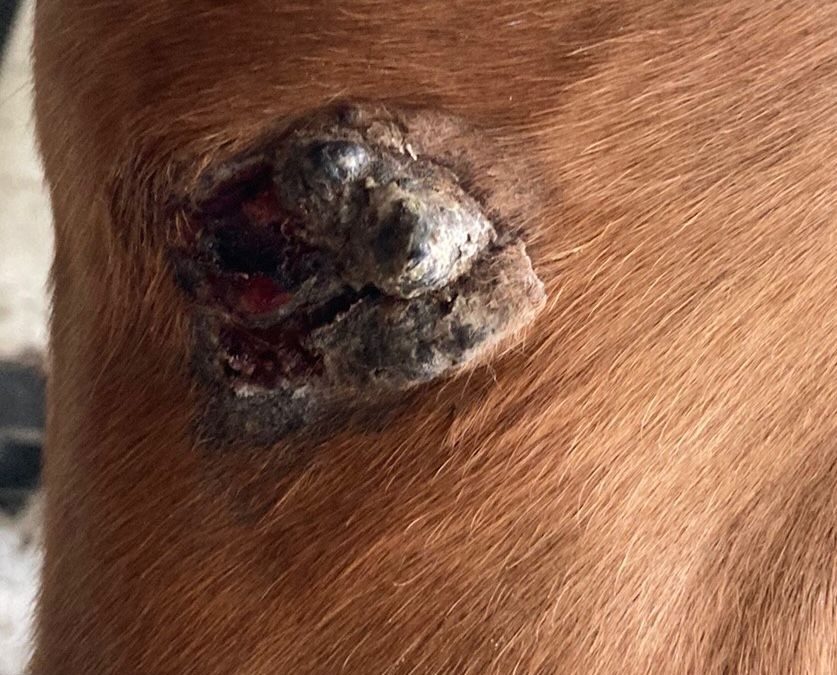Sarcoids and melanomas are the two most common skin tumours that we see in horses. They can both affect horses from a very young age, and if they have one, there are usually more lurking. Although most of them will be considered ‘benign’, they can become very large and spread locally.
Sarcoids:
Sarcoids are incredibly common in all ranges of breeds and age of horse. They are thought to be associated with a type of bovine (cow) papillomavirus. Not all horses and ponies that come in contact with the papilloma virus will develop sarcoids but some horses may be genetically susceptible to developing them.
There are 4 main types of sarcoid:
- Occult – these may be subtle and can appear as an area of hair loss or coat change, with thickened or grainy feeling skin
- Verrucose – often present as grey, scaly or warty areas of skin, they’re often slow growing and can be mistaken for ringworm or scar tissue
- Nodular – a well-defined, firm, round lump under the skin that is hairless
- Fibroblastic – these sarcoids are fleshy, may bleed easily, appear angry. Due to their ulcerative nature, they attract flies.
Some sarcoids can be a mix of more than one type and multiple sarcoids can grow into each other to form a ‘plaque’.
Malignant sarcoids are, thankfully, rare; they spread via lymph vessels to form a network of tumours.
Sarcoids can each behave very differently and therefore require different treatments. The earlier we catch them, the better.
After identifying sarcoids and taking pictures, we generally request a consultation with Equine Medicine Specialist, Professor Derek Knottenbelt. Professor Knottenbelt then advises and prescribes a treatment plan.
Melanoma’s:
Melanomas are almost always seen in grey horses and often appear as black hairless lumps. They’re commonly seen under the tail, in the sheath and around the eyes, but can develop in other parts of the body.
You often see large lumps around the throat latch area, – these are often melanomas that have grown within the salivary glands or lymph nodes.
Melanoma’s can also grow internally and can be a cause of obstructive colic in older grey horses.
Unfortunately, melanomas are almost inevitable in grey horses. They can go many years without causing problems but do have the potential to become malignant or so large that they affect the welfare of the animal. If at a high risk of causing problems, it is better to have them examined and a treatment plan formulated for their removal.
Melanomas can occur in non-grey horses, too, but are thankfully much less common as these tend to be more aggressive.
If you have noticed a lump, bump or other skin issue on your horse, you can reach our team of vets via 01782 898102 who are always happy to help.

